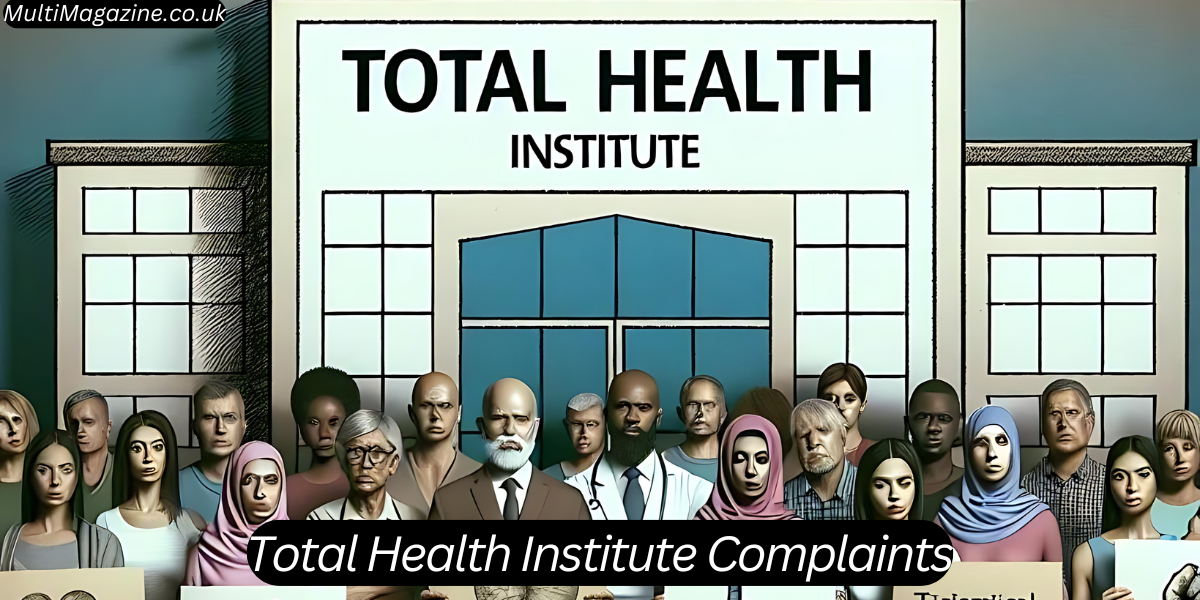In today’s rapidly evolving healthcare environment, the efficient management of workforce resources is more crucial than ever. Healthcare organizations grapple with challenges like fluctuating patient volumes, budget constraints, and staff shortages. To address these issues, Smart Square HMH offers a sophisticated solution designed to streamline staffing processes and enhance operational efficiency. Developed by Avantas, Smart Square HMH integrates advanced analytics, real-time data, and predictive modeling to optimize staffing and improve patient care. This article provides a comprehensive overview of Smart Square HMH, exploring its features, benefits, implementation strategies, and future prospects, with real-world examples illustrating its impact.
What is Smart Square HMH?

Smart Square HMH is a state-of-the-art workforce management platform specifically designed for the healthcare industry. It addresses the unique challenges faced by healthcare organizations, such as hospitals, clinics, and long-term care facilities. By leveraging advanced technology, Smart Square HMH, ensures that the right staff with the appropriate skills are available at the right time, which enhances patient care and operational efficiency.
Key Features of Smart Square HMH
Predictive Analytics: One of the standout features of Smart Square HMH is its predictive analytics capabilities. The platform utilizes historical data, seasonal trends, and other variables to forecast patient volumes and staffing needs. This predictive power allows healthcare organizations to anticipate fluctuations in patient demand and make informed decisions about staffing levels.
Real-Time Scheduling: The platform’s real-time scheduling feature allows managers to adjust staffing levels dynamically based on current patient volumes and unforeseen circumstances. This flexibility is crucial for maintaining optimal staffing levels and avoiding both overstaffing and understaffing, which can impact patient care and operational efficiency.
Staffing Optimization: Smart Square HMH employs advanced algorithms to match staff availability with patient care requirements. This ensures that healthcare providers are utilized efficiently, optimizing both staff performance and patient care outcomes.
Self-Scheduling and Shift Bidding: Empowering staff with self-scheduling and shift-bidding options is another significant feature of Smart Square HMH. By giving employees more control over their schedules, the platform enhances job satisfaction, reduces scheduling conflicts, and fosters greater engagement among staff.
Labor Cost Management: Managing labor costs is a critical concern for healthcare organizations. Smart Square HMH helps control these costs by optimizing staffing levels and reducing reliance on expensive overtime or agency staff. The platform provides insights into labor expenses, enabling organizations to manage their budgets more effectively.
Compliance and Reporting: Ensuring compliance with labor laws and organizational policies is essential for healthcare organizations. Smart Square HMH includes features that help organizations meet regulatory requirements and generate customizable reports on staffing metrics.
The Benefits of Using Smart Square HMH
The implementation of Smart Square HMH offers numerous benefits, ranging from improved patient care to enhanced operational efficiency. Here’s a closer look at the advantages that healthcare organizations can gain from using this platform.
Enhancing Patient Care
Improved patient care is a direct benefit of using Smart Square HMH. The platform ensures that the right number of staff with the appropriate skills are available when needed. This minimizes issues like long wait times and inadequate attention to patients, which can occur due to staffing shortages.
For example, Hackensack Meridian Health, one of New Jersey’s largest healthcare systems, implemented Smart Square HMH to address staffing variability. The result was a noticeable improvement in patient care across their network of hospitals and care facilities. The platform’s ability to optimize staffing levels helped maintain high standards of care even during peak demand periods.
Boosting Operational Efficiency
Operational efficiency is significantly enhanced with Smart Square HMH. By streamlining staffing processes, the platform allows administrators to focus on other critical aspects of operations. This includes patient care, strategic planning, and quality improvement initiatives.
A large hospital group in the Midwest reported that after adopting Smart Square HMH, they reduced the time spent on manual scheduling tasks. This increased their overall operational efficiency, as administrative staff could now dedicate more time to strategic and patient-focused activities.
Achieving Cost Savings
Cost management is a crucial aspect of healthcare administration. Smart Square HMH aids in controlling labor costs by optimizing staffing levels and reducing the need for overtime or temporary staff. Predictive analytics play a key role in this, allowing organizations to plan effectively and mitigate the financial impact of unexpected patient surges.
For instance, a community hospital that adopted Smart Square HMH saw a 20% reduction in labor costs within the first year. This reduction was achieved through better staffing optimization and decreased reliance on overtime, illustrating the platform’s effectiveness in managing expenses.
Improving Employee Satisfaction
Employee satisfaction is essential for maintaining a motivated and committed workforce. Smart Square HMH contributes to higher job satisfaction through its self-scheduling and shift-bidding features. By allowing staff to choose shifts that align with their personal and professional needs, the platform reduces scheduling conflicts and fosters a more positive work environment.
A long-term care facility in the South experienced improved staff satisfaction and retention rates after implementing Smart Square HMH. Employees appreciated the flexibility to select shifts that suited their lives, leading to increased engagement and reduced turnover.
Implementing Smart Square HMH
The successful implementation of Smart Square HMH involves several key steps. Here’s a detailed guide to the process:
Planning and Assessment
Before implementing Smart Square HMH, a thorough assessment of current workforce management processes is necessary. This involves identifying specific challenges and gathering input from various departments such as nursing, human resources, and finance. Understanding these needs helps in tailoring Smart Square HMH to address the organization’s unique requirements.
Engaging Stakeholders
Engaging key stakeholders early in the process is crucial for ensuring a smooth transition. Involving leadership and staff in the decision-making process helps build support for the new system. Effective communication about the benefits of Smart Square HMH and how it will address existing challenges is essential for gaining buy-in.
Customization and Configuration
Smart Square HMH offers extensive customization options to align with an organization’s policies, procedures, and goals. During this phase, the platform is tailored to meet specific needs, including setting up predictive models, defining staffing rules, and configuring reporting tools. Working closely with Avantas during this phase ensures that the platform is set up correctly.
Training and Support
Comprehensive training is vital for a successful implementation. Training sessions should cover the platform’s functionalities, including navigation, scheduling tools, and report generation. Ongoing support is also important to address any issues that arise and to help users adapt to the new system.
Pilot Testing
Conducting a pilot test in a specific department or unit allows organizations to identify potential issues and make necessary adjustments before full-scale implementation. This phase involves monitoring key performance indicators such as staffing efficiency, employee satisfaction, and patient care outcomes to ensure that Smart Square HMH is meeting its objectives.
Full Implementation and Monitoring
Following a successful pilot test, Smart Square HMH can be rolled out across the organization. Continuous monitoring and evaluation are crucial to ensure that the platform delivers the expected benefits. Regular reviews of performance metrics and user feedback help identify areas for improvement and make necessary adjustments.
Challenges and Considerations
While Smart Square HMH offers numerous advantages, healthcare organizations may face challenges during its implementation and use. Addressing these challenges proactively can help ensure a smooth transition.
Resistance to Change
Resistance to change is a common challenge when implementing new technologies. To address this, organizations should employ effective change management strategies. This includes clear communication about the benefits of Smart Square HMH, involving staff in the decision-making process, and providing support throughout the transition.
Data Integration
Integrating Smart Square HMH with existing systems, such as electronic health records (EHRs) and payroll systems, can be complex. Ensuring seamless data flow between systems is essential for avoiding data silos and maintaining a unified view of workforce management. Collaboration with IT teams and Avantas can facilitate smooth integration.
Customization Complexity
Customizing Smart Square HMH to fit an organization’s specific needs requires time and resources. Allocating sufficient resources for this phase and working closely with Avantas can help streamline the process. Clear communication about customization requirements and expectations is essential for success.
Ongoing Maintenance and Support
Regular maintenance and support are necessary to address technical issues and keep the platform up to date. Establishing a support plan and providing training for IT staff can help ensure that Smart Square HMH continues to function effectively and meet organizational needs.
Technical Architecture of Smart Square HMH
Understanding the technical architecture of Smart Square HMH provides insight into its capabilities and how it supports its advanced features.
Data Analytics Engine
The data analytics engine is a core component of Square HMH. It processes large volumes of data from various sources, including EHRs, historical staffing data, and patient admissions records. Advanced algorithms analyze this data to identify patterns and make accurate predictions about patient demand and staffing needs.
Integration Layer
The integration layer enables Square HMH to connect seamlessly with other healthcare IT systems. This integration ensures that data is shared across systems, providing a unified view of workforce management and eliminating data silos. The integration layer supports interoperability with EHRs, payroll systems, and HR management tools.
User Interface
The user interface of Square HMH is designed to be intuitive and user-friendly. It features role-based access, providing different functionalities based on user needs. Customizable dashboards allow users to display relevant information and access key metrics easily. The interface is designed to enhance usability and streamline workflows.
Mobile Accessibility
Square HMH offers mobile accessibility through a dedicated app. This feature allows staff to manage their schedules on the go, improving responsiveness and engagement. Employees can view their schedules, request shift changes, and bid on shifts from their mobile devices, making it easier to stay connected and engaged with their work.
Security and Compliance
Security and compliance are top priorities for Square HMH. The platform employs robust security measures, including encryption, multi-factor authentication, and regular security audits, to protect sensitive data. Compliance with regulations such as HIPAA ensures that patient and staff information is handled securely and in accordance with industry standards.
Comparative Analysis: Smart Square HMH vs. Other Workforce Management Tools
To better understand the position of Square HMH in the market, it is helpful to compare it with other workforce management tools available to healthcare organizations.
Kronos Workforce Central
Kronos Workforce Central is a widely used workforce management solution that offers comprehensive scheduling and timekeeping features. While it provides robust functionality for managing employee time and attendance, Square HMH distinguishes itself with its specialized focus on healthcare workforce management. The predictive analytics and real-time scheduling features of Square HMH are tailored specifically to the unique needs of healthcare organizations, providing a more targeted solution for optimizing staffing levels.
Cerner PowerChart
Cerner PowerChart is an electronic health record (EHR) system with integrated workforce management capabilities. While it offers features for managing staff schedules and tracking labor costs, Square HMH excels in providing advanced predictive analytics and staffing optimization tailored to healthcare environments. The dedicated focus of Square HMH on workforce management, coupled with its real-time data capabilities, sets it apart from EHR-based solutions.
ScheduleAnywhere
ScheduleAnywhere is a scheduling tool designed for various industries, including healthcare. It offers features such as shift scheduling, time tracking, and employee communication. However, Square HMH provides more advanced workforce management capabilities, including predictive analytics and labor cost management, which are essential for addressing the complex staffing needs of healthcare organizations.
Future Prospects and Emerging Trends
As healthcare continues to evolve, so too will the tools and technologies used to manage its workforce.Square HMH is well-positioned to adapt to emerging trends and technological advancements. Here are some future prospects and trends that may impact the platform:
Integration with AI and Machine Learning
The integration of artificial intelligence (AI) and machine learning (ML) into workforce management tools is an emerging trend. These technologies can enhance predictive analytics, enabling more accurate forecasting of patient volumes and staffing needs. Square HMH is likely to incorporate AI and ML advancements to further refine its predictive capabilities and improve staffing optimization.
Telehealth and Remote Workforce Management
The rise of telehealth has introduced new dynamics to workforce management. As more healthcare services are delivered remotely, Square HMH may expand its features to address the unique needs of remote healthcare providers. This could include tools for managing telehealth appointments, coordinating remote staff, and integrating with telehealth platforms.
Enhanced Data Integration and Interoperability
Future developments in data integration and interoperability will play a crucial role in workforce management. Square HMH is expected to continue improving its integration capabilities, allowing for seamless data flow between various healthcare IT systems. This will provide a more comprehensive view of workforce management and enhance decision-making.
Employee Well-being and Burnout Prevention
Employee well-being and burnout prevention are becoming increasingly important in healthcare. Future iterations of Square HMH may include features designed to support staff well-being, such as tools for managing workload balance, tracking employee satisfaction, and providing resources for mental health support.
For More Information Visit: Multi Magazine
Conclusion
Smart Square HMH represents a significant advancement in healthcare workforce management, offering a comprehensive solution to the challenges faced by healthcare organizations. By leveraging predictive analytics, real-time scheduling, and staffing optimization, the platform helps organizations improve patient care, enhance operational efficiency, and manage labor costs effectively.


